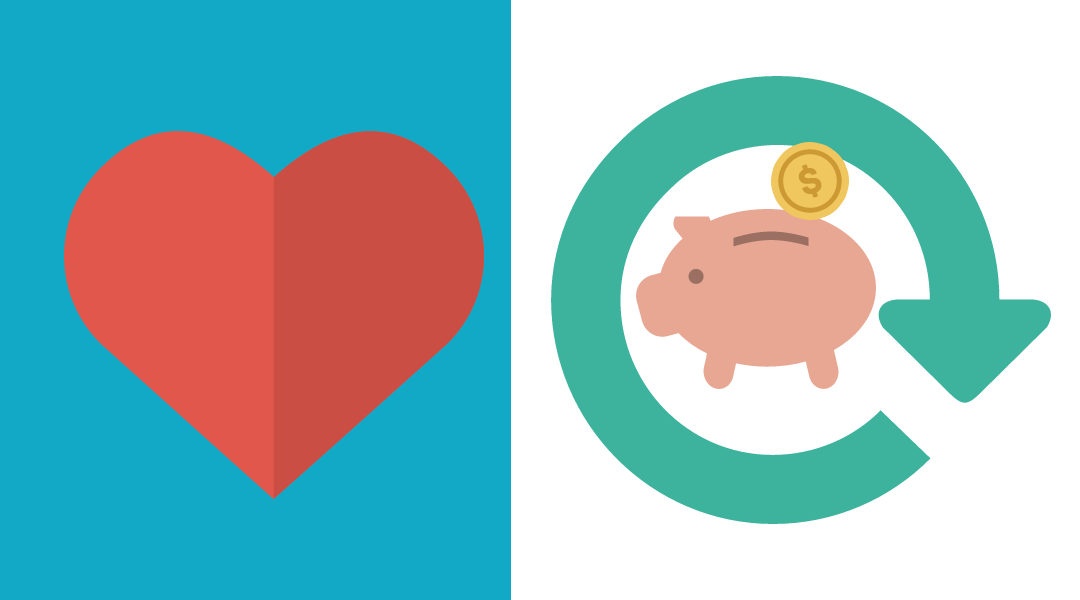If the best things come in small packages, the same can be said of small donations, in particular, the ones that automatically repeat month to month. While one-time donations, especially the large ones, certainly pack a punch, it’s the small recurring donations that are in it for the long haul. They carry some indispensable benefits – beyond the financial ones – that behoove nonprofits to sit up and take notice.
Engaged Donors
When a donor is notified of their monthly donation taking place, it serves as a reminder of their gift, and more importantly, of the organization they support. At that point, the donation can trigger additional engagement actions – like a visit to the organization’s website or checking its social media, signing up to volunteer, or perhaps the ultimate in relationship building – the donor recommends an organization to friends and family.
Convenience for Donors and Nonprofits
As with anything, you yield better results if you make the process easy. In the increasingly mobile arena of giving, nonprofits have a multitude of self-service recurring donation platforms allowing donors to easily sign up from anywhere. With often seamless incorporation into organizations’ fundraising software, these recurring donation platforms require little to no technical expertise to launch and easy maintenance and reporting.
What’s in it for the donor? Providing one-time registration on the organization’s website or through a third-party fundraising provider, nonprofits facilitate an easy way to set up recurring donations. Donors can often register using social media logins and are prompted to share their philanthropy with others, creating that ideal fundraising domino effect.
The “M” Word: Millennials
While they might not be ready for large gifts, millennials (ages 20-36 in 2017) are estimated to be the most philanthropic generation. Due to the economy in which they graduated from college, many are saddled with some form of college debt and trying to make their adult life work on a budget. So small recurring donations are attractive to their frugal nature.
Keep in mind this is also the generation that grew up with tablets and cellphones in hand. They’re adaptable, welcoming of change, and appreciate the new and innovative.
Socially conscious + budget conscious + mobile technology experts = passionate, generous and vocal supporters willing to become brand ambassadors for an organization. Affordable recurring donations are the entree to bigger and better gifts down the line.
Impactful Fundraising
Numbers don’t lie. A one-time donation of $100 is a welcome gift. But when your donor extends their relationship with a year of giving, contributing as little as $10/month, multiplied by 12 months, that equates to a greater gift and the aforementioned stronger engagement with an organization.
If you’ve ever tried to retain a one-time donor or foster relationships with the people you only see once a year at your fundraiser, you know the value of cultivating a long-term donor.
Getting Started with Recurring Donations
Now that you can no longer ignore the need to incorporate recurring gifts as part of your fundraising plan, what’s next?
First, determine the mechanism through which you will accept monthly donations. If your current online giving infrastructure doesn’t support this type of gift, the good news is you have plenty of third party fundraising providers to help. Most will charge a nominal fee or percentage of gross donations, but those are negligible when you consider their services, like user-friendly technology for both nonprofit and donor, reporting functions, and integration to easily promote via social media.
Next, set a goal. Do you want to raise $2,000 in one year solely through recurring gifts? Determine how many donors you need to achieve that goal.
With that in mind, create a campaign to promote recurring gifts. Be sure to include the value and impact on your organization. Will a $10 monthly donation over the course of one year support operating expenses for a program? If so, include that in an email blast and social media posts. Put a face and a story to your goal and its impact.
Ask for referrals. Give donors a call to action: Ask friends and family to join in their support of your organization.
Implementing a recurring donation program will require some initial legwork and continued promotion as an impactful giving option among supporters. With some strategic planning, you can stay inspired and make progress towards your year-end goal. It’s only February – it’s not too late to start something new for 2017!


Recent Comments